How to build a home gym: perfect workouts in your own space
A home gym makes it so much easier to find time to work out. Find out how to create one here
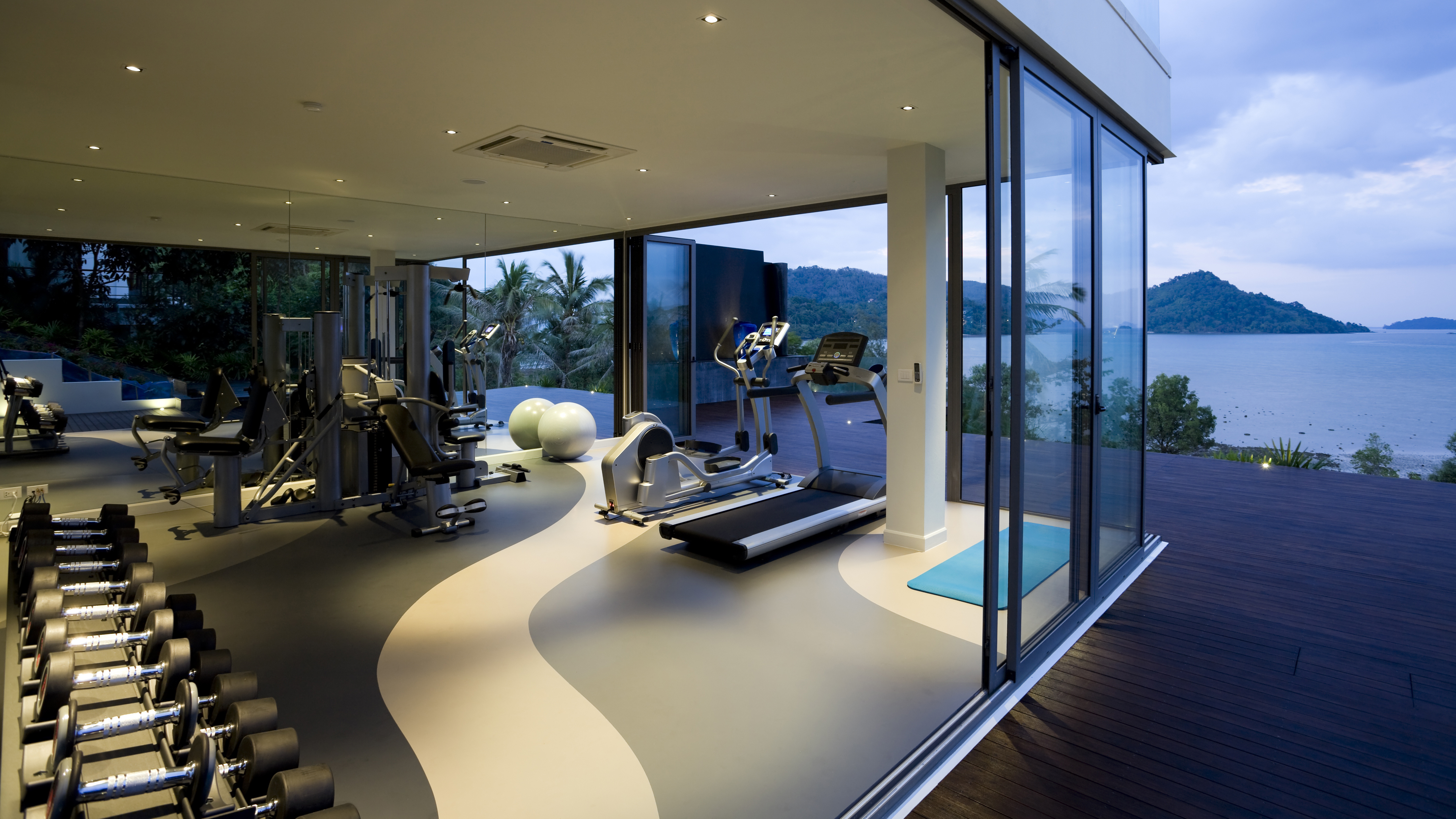
While building your own home gym might sound like a luxury, gym memberships can easily cost £500 each a year. So, with a bit of careful planning, you can have all the benefits of fitness equipment available for your exclusive use whenever you want it — and potentially save money into the bargain.
You can create a home gym either through extending or remodeling your home or, more easily, you might have a small space in a home office or spare room that you could put to better use with the addition of a few bits of kit.
We look at where to add a home gym and what best home gym equipment you might need to get started, as well as extra design considerations such as lighting and flooring as well as other home gym ideas.
Home gyms for working out
Where to put a home gym?
You may be restricted by what space you have available, but if you are undertaking an extension or remodel, your options will be less limited. Garage conversions are a popular location for a home gym, or you could add a garden outbuilding.
Locating the gym on the ground floor is the most sensible option for several reasons:
- Installation of heavy gym equipment needs to be accounted for. If the gym is downstairs, and near an entrance, this will prove much easier than lugging heavy equipment upstairs;
- Exercise machines can be heavy so it is best if you can avoid having to worry about reinforcing an existing upper storey (particularly in an older house);
- If you do plan to put a gym above ground level, you will need to soundproof the floor – rowing machines and treadmills can be particularly noisy to the room below.
- If you plan to use your gym early in the morning before the rest of your family are awake, you will want to ensure it is away from their bedrooms.
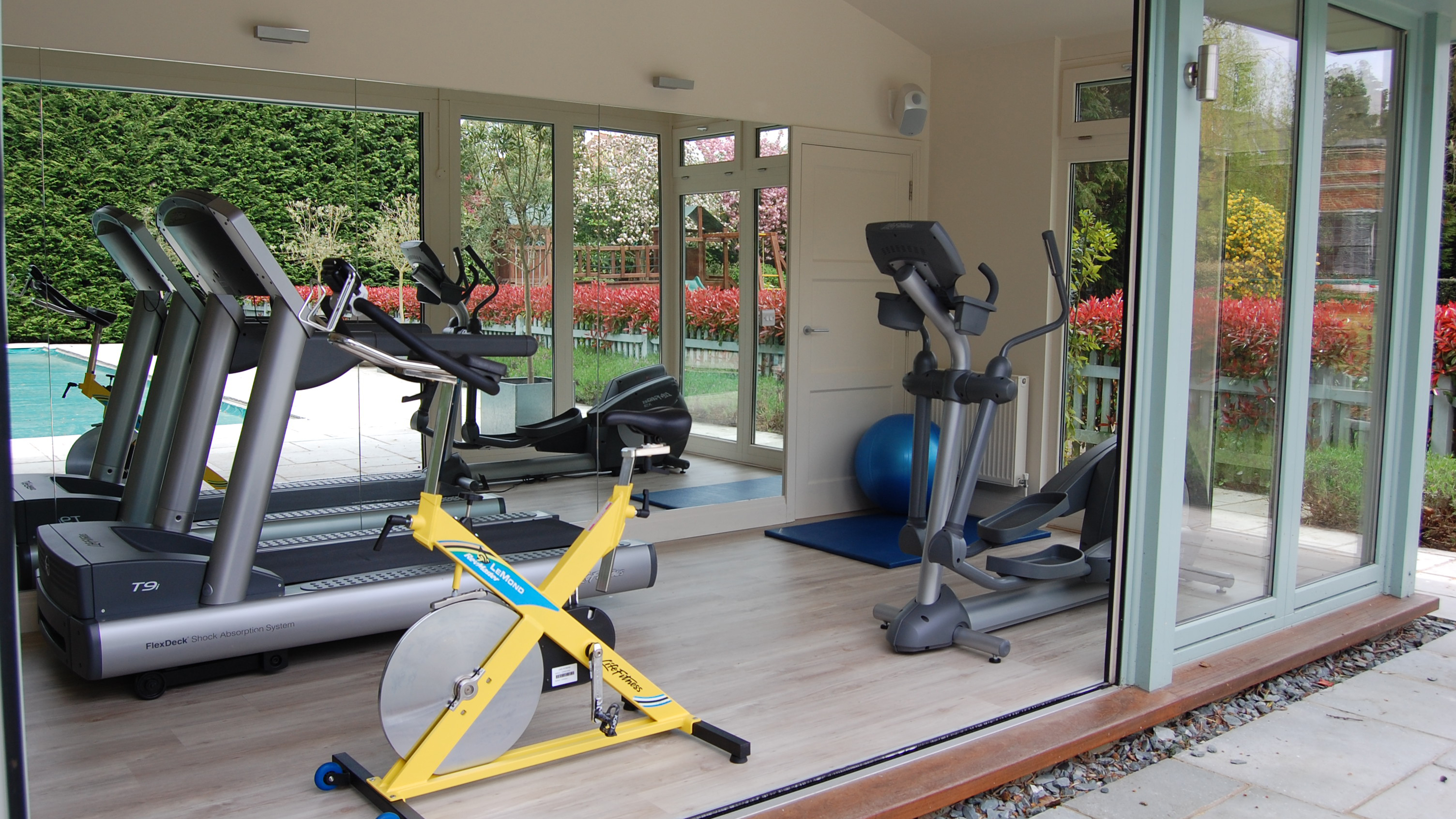
Connecting your home gym to the outdoors by placing it in a garden room, or using bi-fold doors, makes working out more enjoyable and aids cooling in the summer. This space specially designed by motive8 sits alongside a swimming pool, creating a fitness suite in the homeowner's garden
How much space do you need?
Most machines need at least 2m2 and you need to allow for plenty of circulation space. Some equipment will need extra room for movement during operation.
Get small space home decor ideas, celeb inspiration, DIY tips and more, straight to your inbox!
Fitness Superstore’s gym planner helps you visualise the layout of your room, with their detailed machine measurements.
“Don’t try and fill the space, keep it functional and safe with space saving storage and then you can always add kit later if the space allows. If space is limited, try to select equipment with multiple functions i.e. a soft plyometric box which can be used as a step, or a bench to jump onto.”
Matt Leadbitter – Gym designer, Motive8
Does the space need to be multifunctional?
If you don’t have the option of dedicating a whole room to your fitness needs, your new gym could share a space with your home office or spare room. Just remember to plan the space carefully, prioritising exactly what kit you need so you don’t overcrowd the room. If your gym can be packed away, this will help you get ‘in the zone’ whether you are working or working out.
Converting a garage into a home gym
An underused garage is one of the best places to locate your gym. The floor has been built to take the weight of a car, so there will be no worries about strength.
You will also have strong block walls which are well-suited to hanging equipment on. What’s more, even an attached garage will tend to be sensibly located in relation to other rooms (most are attached by a kitchen or utility, so you are less likely to find noise transfer to be an issue).
Find out about garage conversions in our guide.
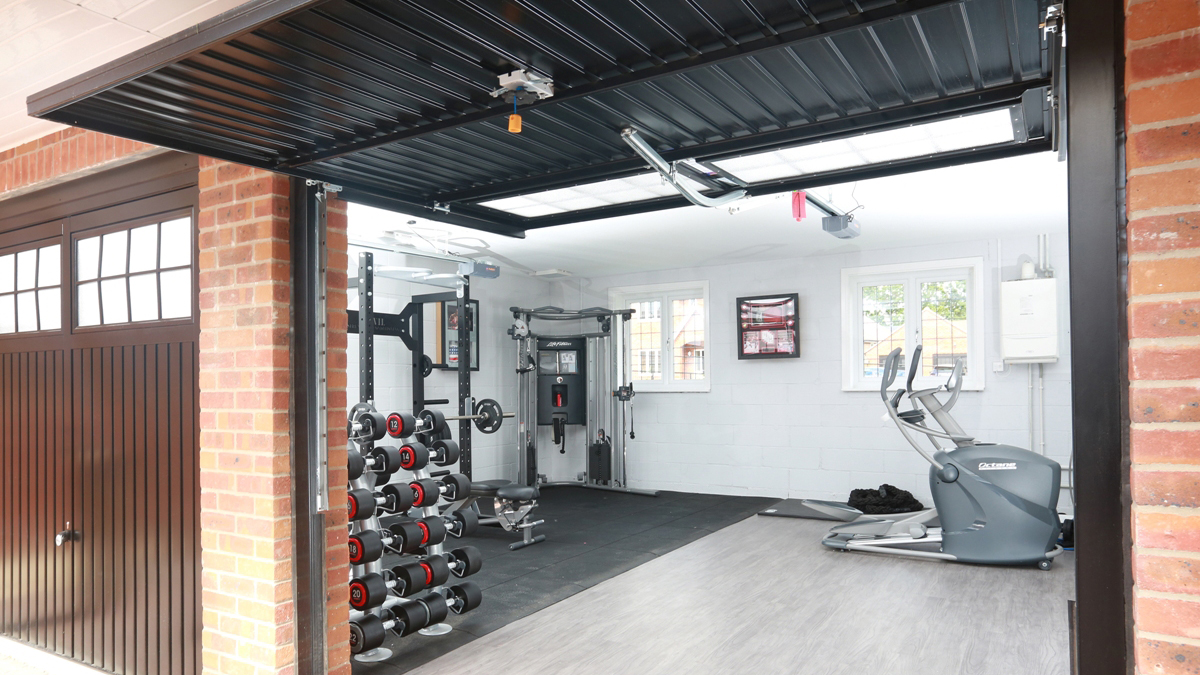
How much does a home gym cost?
Costing a home gym will depend on what kit you need. This is why it is important to be clear about exactly what you want to use the space for. If you get your cardio workout in other ways (going for a run or swim), then don’t waste space or money on expensive treadmills and machines.
Guideline costs for a home gym in a 16 sqm room*
Room decor and flooring: £1,000
Non-folding, electric treadmill: £2,000
Multi-gym: £800
Foldable bench and squat rack: £250
Rack of free weights (8 pairs up to 25kg): £350
Barbell and weight plates: £80
Yoga mat: £15
Gym ball: £10
Total: £4,505
*Approximate costs based on average equipment costs from major retailers
It is also worth noting that the costs of gym equipment vary widely, but you really do get what you pay for. For example, a foldable, manual treadmill can be picked up for as little as £70 yet commercial-standard machines cost £1,000s because of the extra features, quality and sturdiness of the product.
So, if you are committing budget to specialist equipment, don’t scrimp — check it has all the functions you want (heart monitors, training programmes, fitness app connectivity etc), or you will quickly be looking to upgrade.
Here is a guide to the costs of associated building or renovation work to create the room:
- Converting a garage (including heating, lighting and flooring): £5,000–10,000 to convert the average single garage.
- Building a heated garden room with connection to mains power: £300–1,200/m2 for a bespoke building - typically £8,000–20,000
- Renovating an existing room (updating flooring, decorating and adding task lighting): £500–2,000
How to choose the right equipment
If you already have a very set routine at the gym, you will know exactly what kit you need. For example you might be sure you want to use your space for one workout such as yoga or weightlifting.
If not, you need to do a little bit of practical research to decide what you need. Have a look at the our guide to home exercise: 30 exercises to get fit fast. Or take advantage of a trial at a local gym where you can try out lots of different machines. You might even want to book a session with a personal trainer where you can discuss your fitness goals and work out what kit will be most beneficial for your training program.
Choosing the best home gym equipment will come down to how much space you have and what your budget is, but if you want your gym to cater for all-round strength and fitness, the basic needs are:
Best home gym equipment for cardio
It is recommended that everyone does 150 minutes of cardiovascular exercise a week. Walking/running on a treadmill, rowing, using an exercise bike, stepping on a turbo trainer or stepper, or hopping on the cross trainer will all get your heart rate up and burn fat, as will using a punchbag or spin bike. If you don’t have enough room for a machine, just ensure there is space somewhere for a cardio routine (think burpees, star jumps — even just running on the spot).
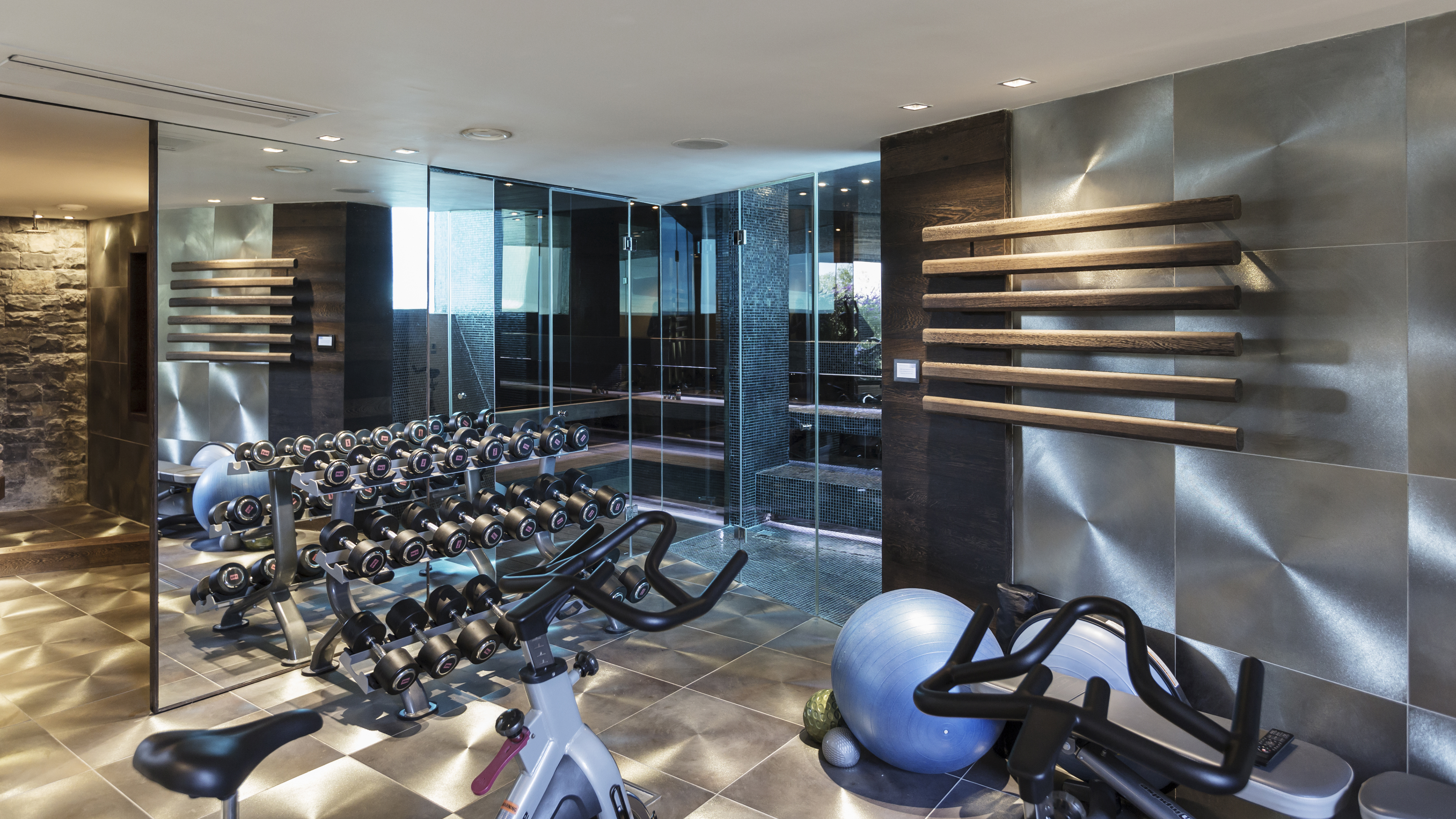
Why should you buy a treadmill?
'Not only is running at home easier and warmer than running in say a park or on the streets, but you can also train at any time of day or night and plan your schedule around what suits you!' says David Graham, content author at Powerhouse Fitness.
'That’s not to say that running outside doesn’t have its advantages, of course, it does! It’s free, you have total freedom of routes and you can generally prepare better for road runs or marathons.'
'But by pointing you in the right direction in terms of suitability, value for money, and interactive classes, you'll break down which of the best treadmills will be a welcome addition to your home whilst enhancing your workouts!'
What type of treadmills are available?
'The first part of making any purchase is deciding on what style of treadmill you need that will best meet your needs,' says Graham.
Desk: Desk treadmills or walking pads are a superb option for home and office working. Walking at a gentle pace has been proven to increase creativity, productivity as well as general health and well-being improvements.
Motorized treadmills: With built-in motors from a range of different powers, the belt revolves around itself at the speed selected by you. Perfect for individual walks or runs, these treadmills can range from anything between 1kp/h and 22kp/h.
Curved treadmills: The latest trend of treadmills. Self-powered, curved treadmills allow you to run with a natural running style, on the balls of your feet, pushing your boy forward and creating momentum to rotate the treadmill belt.
Considerations to make when buying a treadmill
'There are lots of things to consider, are you looking for a treadmill to walk or jog on?' asks Graham.
'Perhaps you are a fan of HIIT and need something more robust with incline? Or are you a serious athlete that is looking for top performance with a higher top speed?'
Other important factors are space; so consider folding treadmills rather than fixed treadmills where you are working with limited floor space. And deck size, remember your height has an impact, so the taller you are the bigger the running deck you will need to fit your stride.'
'Cushioning should also be considered as this helps to reduce the impact on your joints, especially your knees and ankles. In general, the higher the price, the better the cushioning technology tends to be.'
What features should I look out for in a treadmill?
'Pretty much every treadmill has an on-board console of some sort, that you can use to track your progress and stay motivated.' says Graham.
'Technology is always changing and consoles now can range from a basic 5 inchTFT monitor to a 22 inch HD console with a range of functions and entertainment apps.'
'Look out for Hot Keys. These are buttons with pre-set functions such as speed, incline, quick start, stop and volume control, that make changing settings really simple.'
'Next review the workout programs. Most consoles come with pre-installed workouts programs, it is always worth checking how many programs there are including heart rate options.'
'Stats. Make sure that the console at a minimum provides you with your real-time stats; time, distance, speed, incline, resistance, heart rate, calories and watts.'
' From an entertainment perspective, check which apps are included. This can be things like Kinomap, Amazon, Netflix, Spotify, Facebook, Twitter and Instagram. Also check and see if the console has in-built speakers or a port to connect your device or earphones to.'
Best home gym equipment for strength
Anyone who is into weightlifting can’t go without a good set of weights, but don’t assume weights are only for those looking to build muscle mass. Muscle strength is important for overall fitness, and healthy joints. Holding small dumbells while lunging, squatting, or crunching will help tone your body.
One of the best multigyms with various pulleys, bars, and levers will work for all your major muscle groups. They allow you to lift weights safely by aiding technique. However, they can be big, expensive, and tricky to set up. An abs machine is a good alternative, allowing you to use bodyweight to work out.
If space (and budget) is at a premium, free weights such as barbells, kettlebells, and dumbbells are more appropriate. Look for options that come with their own racks or storage systems to keep your gym organized.
How to buy the best dumbbells: Hex dumbbells
'Choosing dumbbells can be tricky… Mostly because at first glance they all look very similar,' says Joanna Musisz, content executive, Powerhouse Fitness.
'And because they do look so similar one may wonder – what’s the reason for the difference in price? In reality, there’s a lot of factors that contribute to that including shape, materials, the thickness of layering, and durability.'
'The main two categories of dumbbells are fixed dumbbells and adjustable dumbbells. That divides dumbbells into the ones that come with a fixed weight and usually, you’ll buy a few pairs of them to get a variety of weights, and adjustable ones where you buy a set or a system that lets you adjust the weight in one pair of dumbbells. Both categories offer a variety of different dumbbell types.'
'Hex dumbbells are the most common type among fixed-weight dumbbells. They’re usually the cheapest fixed weight option which brings most people to them, especially if they don’t know the differences between hex dumbbells and more expensive types. Thanks to their hexagonal shape, they don’t roll away when you put them on the floor. This also makes them perfect for exercises that require stability such as dumbbell push-ups.'
'The hexagonal shape makes them easy to store, even without a rack – you can place them on one another. Hex dumbbells incorporate durable rubber coating that makes them quiet to use, protects your floor from damage, and prevents rusting. Additionally, the knurled handle offers supreme grip, making sure the dumbbell doesn’t slip out of your hands. One disadvantage of the hex shape is that the edges wear off way faster than round dumbbells.'
'Pros: They don’t roll away, are easy to store on top of each other, most budget-friendly fixed weight options can be used for exercises such as dumbbell push-ups, coated with durable rubber.'
'Cons: The edges of the hexagonal shape are prone to wear and tear.'
How to buy the best dumbbells: Pro dumbbells
'Pro dumbbells are similar in features to hex dumbbells – rubber coating and knurled handle – but with one major difference that affects their functionality,' says Musisz.
'The shape of Pro dumbbells is round, which means… they roll. It doesn’t necessarily need to be a disadvantage as you can use them for exercises such as ab roll-outs. The round shape makes them less prone to wear and tear so they are a more durable option.'
'Pro dumbbells (like hex dumbbells) are made of cast iron and coated in thick, durable rubber that prevents floor damage, rusting, and noise.'
'Pros: They more resistant to wear and tear, can be used for rolling exercises such as abs roll-out, are coated with durable rubber, more long-lasting compared to hex dumbbells.'
'Cons: They tend to be More expensive than hex dumbbells, may roll away when placed on the floor / stored.'
How to buy the best dumbbells: TPU dumbbells
'Thermoplastic polyurethane (TPU) is a versatile thermoplastic elastomer with high durability and flexibility,' explains Musisz.
'Unlike rubber, it has no smell, it’s highly resistant to scratches, oils, and greases and its color doesn’t fade away with time. TPU dumbbells are covered with a thick layer of TPU coating that makes them extremely robust and hard-wearing. Their functionality resembles that of Pro dumbbells – they can be used for rolling exercises such as ab roll-outs; however, their TPU coating makes them superior to any rubber coating. TPU dumbbells can be used in both in-home and commercial gym environments thanks to their full commercial warranty.
'Producing TPU is more expensive compared to rubber, which affects their selling price too, making them a bit more expensive compared to hex and pro dumbbells. They’re also sold as a single dumbbell, so remember to buy 2 if you need a pair.'
'Pros: There's no smell, extremely durable and robust TPU coating, very resistant to wear and tear, can be used for rolling exercises such as abs roll-out, high scratch resistance, superior color stability, resistance to oils and greases, commercial warranty.'
'Cons: They're more expensive than hex and pro dumbbells, and may roll away when placed on the floor / stored.'
How to buy the best dumbbells: Adjustable dumbbells
'Adjustable dumbbell sets consist of handlebars, a set of plates, and collars,' says Musisz.
'There’s a variety of those on the market so you can find both cast iron and rubber-coated plates. Depending on the size and materials the prices vary, however they’re always cheaper than buying a set of fixed weight dumbbells which makes them a perfect budget-friendly option for beginners.'
'If you are a more experienced weightlifter, this may not be the choice for you. Unfortunately, the weight adjustment system isn’t very efficient and it takes a lot of precious exercising time to change the plates and adjust the weight. Usually, we don’t have few minutes in between each exercise to change the weight, which is why if you’re a more advanced fitness enthusiast you may want to consider a set of fixed weight dumbbells instead.'
'They're budget-friendly, adjustable weight, space-saving, but it can take a lot of time to change the plates and adjust the weight, less hard-wearing than fixed weight dumbbells.'
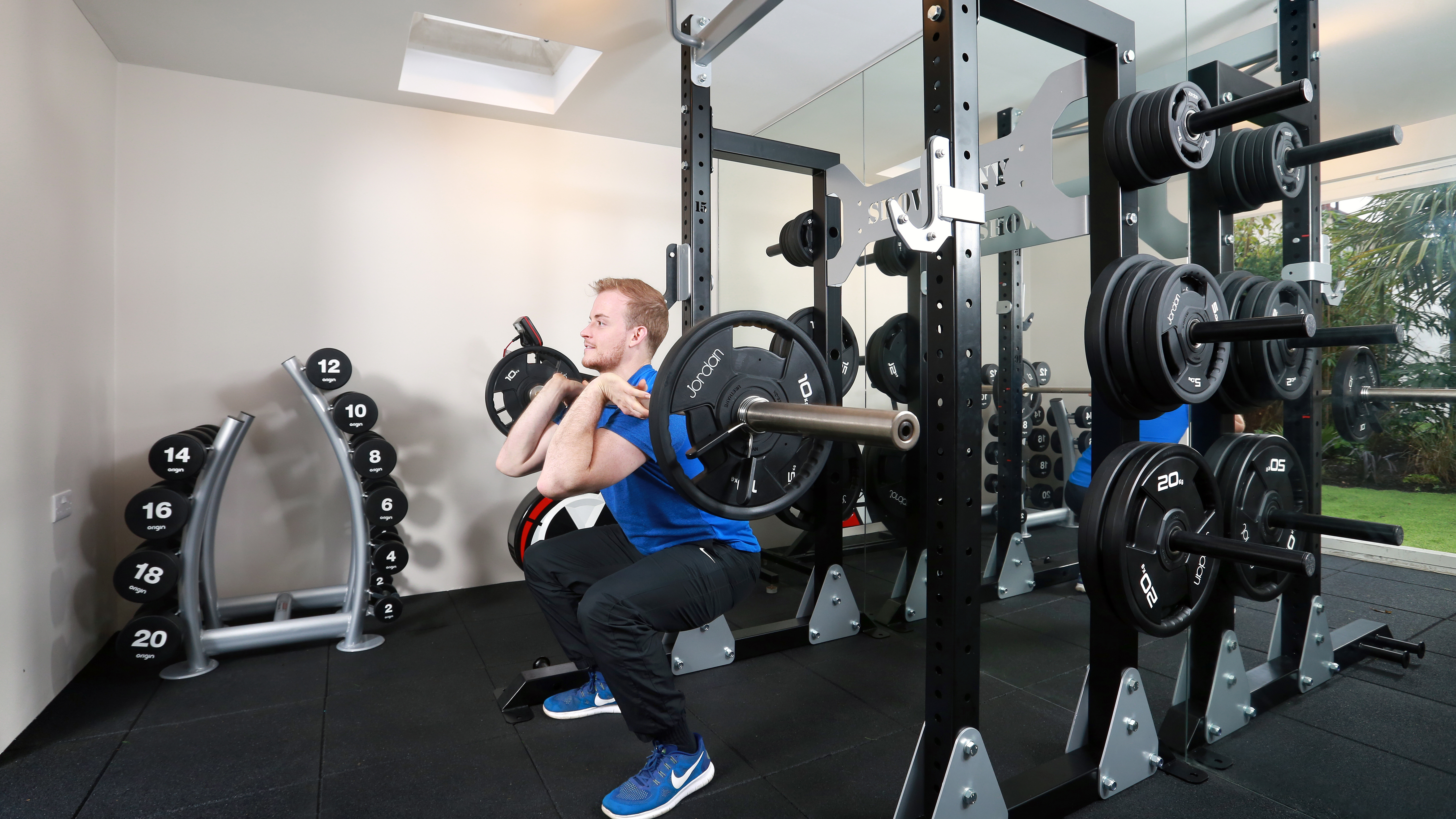
A power rack allows you to safely lift weights, while giving you somewhere to store spare weight plates while out of use. This home gym by motive8 includes shock-absorbent free-weight matting
Best home gym equipment for flexibility
A flexible body is less likely to suffer injuries and will lead to better posture (which in turn also prevents injury). Stretching your body does not require special equipment, but it is definitely worth investing in a mat to make sitting or lying on the floor more comfortable. You can also buy resistance bands, exercise balls, yoga mats and rollers, to assist stretching and strength workouts.

Audio visual
Whether you want to blare out a high-tempo playlist to keep you moving, or some zen background music for your yoga routine, a good sound system should be high on your gym wishlist. Connect this to your smart phone, or voice control system such as Alexa or Google Home Assistant, for hands-free operation while you work out.
Find out more about surround sound in our buying guide:
You might also want a TV screen so you can catch up on your favourite shows as you run or row.
Don’t forget to relax:
The sole purpose of your home gym is not to punish your body — relaxing is just as important for wellbeing. Why not invest in a massage chair (or massage pad), home sauna, or even something as simple as an aromatherapy diffuser and mood light to take your cool down to the next level.

This home gym designed by motive8 includes a TV screen and mirrored wall for checking weightlifting technique
Walls and ceilings in gyms
Mirrors
No, not just so you can admire the results of your hard work – mirrors are really important for checking your form while performing various exercises. Injury can occur if you lift weights incorrectly so a mirror is essential for keeping your positioning in check.
If you use the space for dance or yoga, again, mirrors are a necessity.
You may want to suspend kit from your gym walls or ceilings, such as storage or punch bags. If you don’t have solid block walls, you will have to reinforce the walls and secure heavy items to the studs.
At the same time, you should address the soundproofing of the room as gyms can be noisy places. Look for special, sound insulating plasterboard, or add insulation between walls, floors and ceilings to decrease sound transfer.

motive8 design, install and maintain home gyms to suit all budgets
Which flooring should you choose for a home gym?
When choosing flooring for your gym, you need to ensure you find a product that:
- you won’t slip on while exercising;
- can withstand the wear of weights and equipment.
Carpet is a bad choice because it is hard to keep clean and you will want to avoid porcelain, stone or ceramic tiles that will crack if you drop weights on them. Tiles can also be slippy.
The best choices are:
- Specialist shock absorbent gym flooring (usually made from rubber) can be bought online;
- Non-slip rubber flooring is available in a number of colours;
- Carpet tiles are hardwearing;
- Luxury vinyl tile will handle scuffs well and is easy to clean.
Climate control in a home gym
Your body temperature will change a lot while you work out. Cardio will get you hot and sweaty, but you need to remember to keep your muscles warm while you cool down. So it is important that you include heating and cooling that can be easily controlled.
While underfloor heating is generally a good option, radiators will offer more instantaneous heating control. In a dedicated home gym, you will almost certainly want to include an air conditioning unit too.
Windows
When adding windows to your home gym, you need to consider passive solar gain. If you have lots of south-facing glazing, the room will quickly become unbearably hot in summer, rendering the space useless. If south-facing windows are unavoidable, look for units with solar control.
At the same time, think about privacy as nobody wants to be gawked at while working out. Clerestory windows at ceiling height are one option, or you could specify privacy glazing.
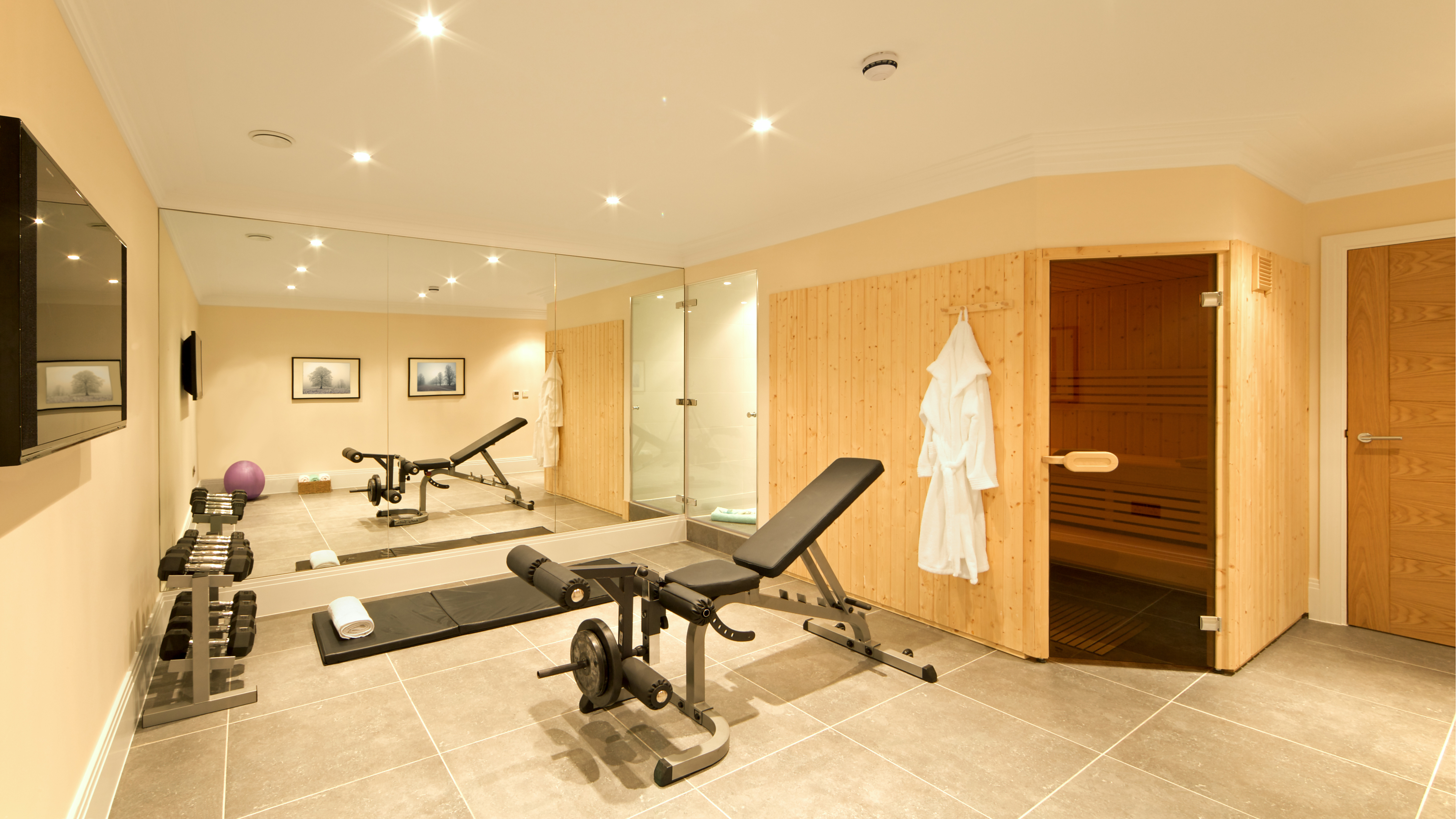
Lighting a home gym
When designing a lighting scheme for any room, experts split the kinds of lighting you need in to three types
Ambient lighting for home gyms
Also known as general lighting, this is the type of lighting that provides a good level of visibility without being too bright. Overhead pendants or wall-lights usually offer a good level of ambient lighting. You might want to use dimmable lights if you plan to use the space for something like yoga or as a relaxation room.
Task lighting for home gyms
This is the lighting needed to ensure you can see what you are doing. In a home gym, this might be best achieved with a set of spotlights positioned somewhere where you might need brighter lighting, such as over your weights area.
Accent lighting for home gyms
Accent lighting does just that — it accents a specific feature in a room such as a piece of art or an architectural element like the treads of a staircase. While it does not serve a practical function in your home gym, accent lighting can add a layer of interest or even color to the space.
More must-know stuff:
- Extension cost calculator: work out your budget when extending a house
- Single storey extensions: costing, planning and designing your single storey extension
- Planning, designing and costing a two storey extension

Lindsey is Editor of Realhomes.com and Editor in Chief for Home Ecommerce at Future. She is here to give you aspirational, yet attainable ideas for your home and works with her team to help you get the best buys, too. She has written about homes and interiors for the best part of a decade for brands including Homes & Gardens, Ideal Home and Gardeningetc and isn't afraid to take the inspiration she finds at work into her own space – a Victorian terrace which she has been (slowly) remodelling for the last eight years. She is happiest sipping a cup of tea with a cat on her lap (if only she had a cat).

